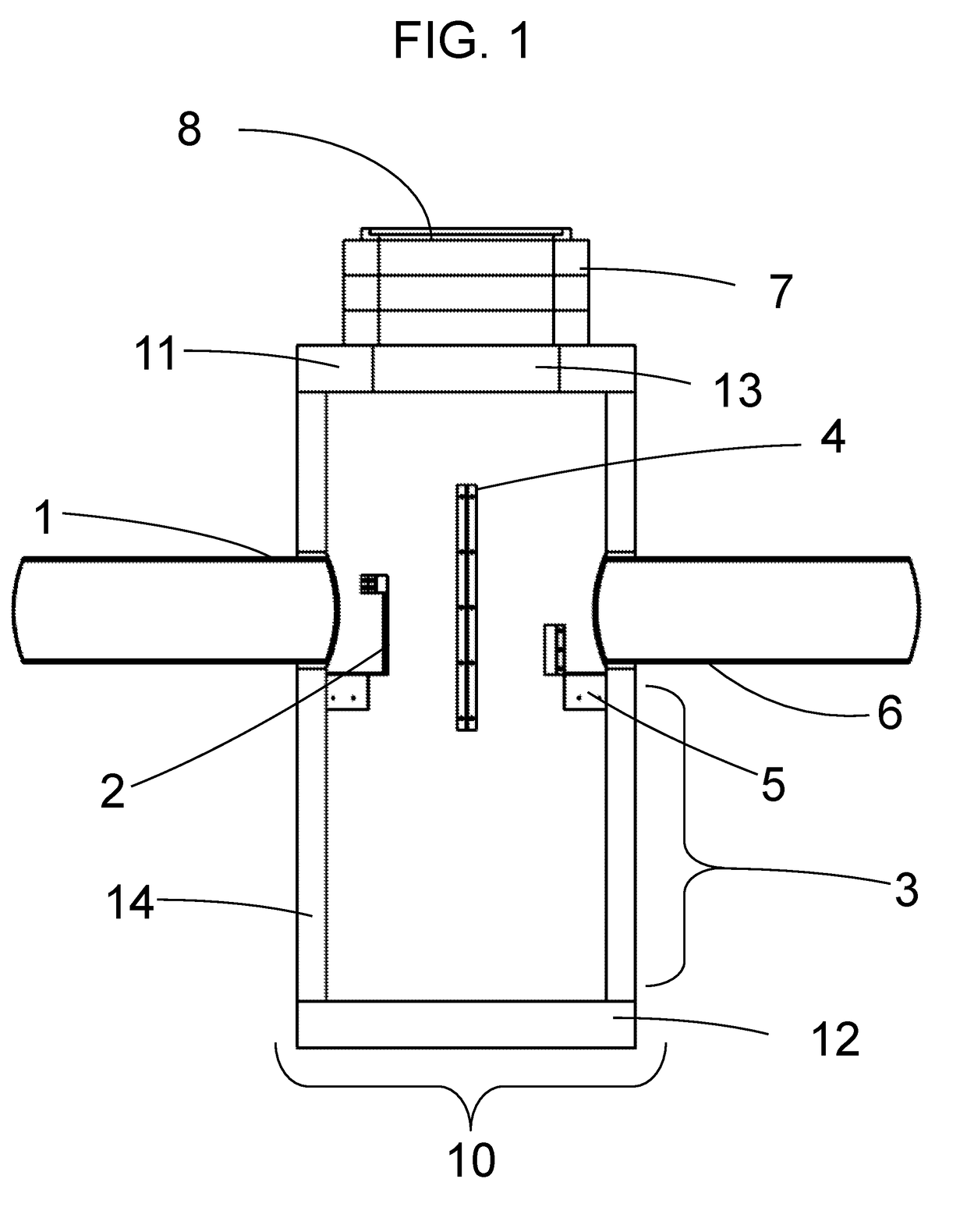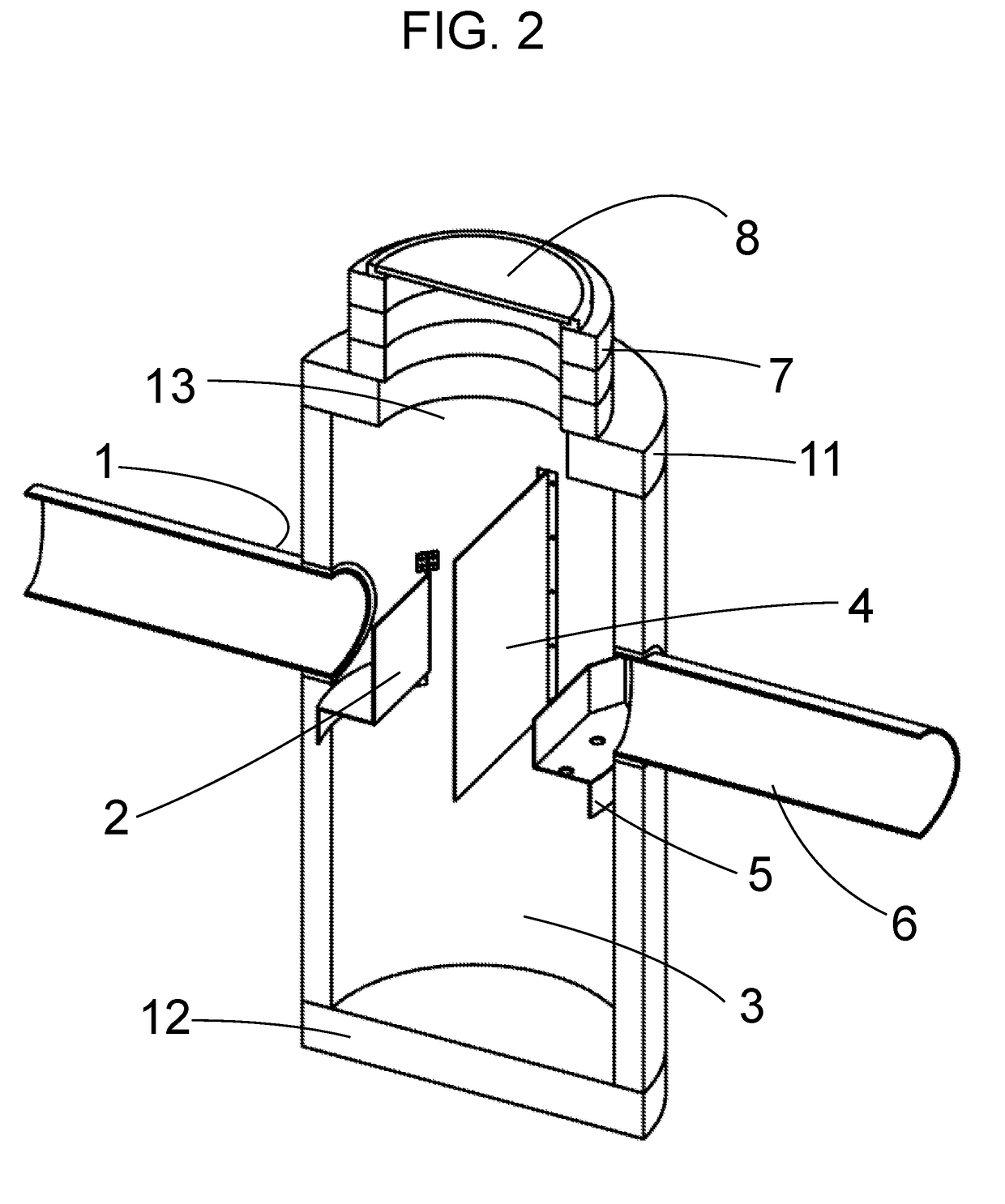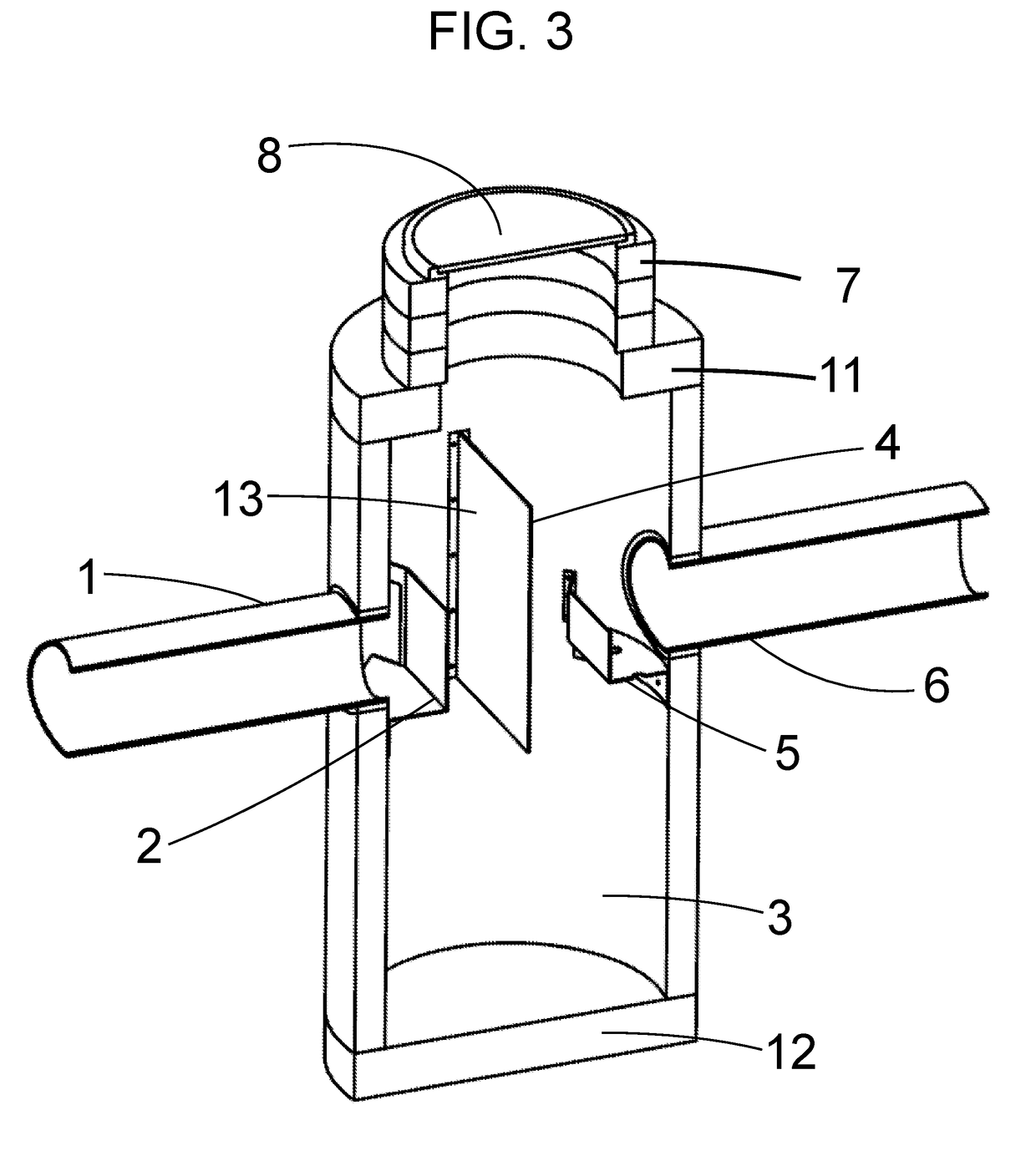Hydrodynamic separator for stormwater treatment
a technology of stormwater treatment and separator, which is applied in the field of advanced sediment removal devices, can solve the problems of pollution of our waterways, difficult identification of non-point sources, and significant adverse effects on the health of ecosystems, and achieve the effect of facilitating cleaning and maximizing access to the floor
- Summary
- Abstract
- Description
- Claims
- Application Information
AI Technical Summary
Benefits of technology
Problems solved by technology
Method used
Image
Examples
Embodiment Construction
[0036]After reading this description it will become apparent to one skilled in the art how to implement the invention in various alternative embodiments and alternative applications. However, all the various embodiments of the present invention will not be described herein. It is understood that the embodiments presented here are presented by way of an example only, and not limitation. As such, this detailed description of various alternative embodiments should not be construed to limit the scope or breadth of the present invention as set forth below.
[0037]The present invention provides an improved hydrodynamic separator 10 for stormwater treatment designed to maximize flow movement for more efficient sediment removal from stormwater and to maximize clearance space within the sump chamber to facilitate cleaning and increase storage capacity of trash, debris, and sediment.
[0038]In some embodiments, configurations of said invention can be customized depending on site needs, government...
PUM
| Property | Measurement | Unit |
|---|---|---|
| diameter | aaaaa | aaaaa |
| diameter | aaaaa | aaaaa |
| thickness | aaaaa | aaaaa |
Abstract
Description
Claims
Application Information
 Login to View More
Login to View More - R&D
- Intellectual Property
- Life Sciences
- Materials
- Tech Scout
- Unparalleled Data Quality
- Higher Quality Content
- 60% Fewer Hallucinations
Browse by: Latest US Patents, China's latest patents, Technical Efficacy Thesaurus, Application Domain, Technology Topic, Popular Technical Reports.
© 2025 PatSnap. All rights reserved.Legal|Privacy policy|Modern Slavery Act Transparency Statement|Sitemap|About US| Contact US: help@patsnap.com



